Trek Madone Gen 8: As fast as a Madone, as light as an Émonda
The segmentation of road ranges is being abandoned by brands that are now trying to unify aerodynamics and lightness in their bikes. The new Trek Madone Gen 8 also follows this trend, achieving aerodynamics that surpass its predecessor across the entire range of use, while also becoming an extremely lightweight bike thanks to the new OCLV 900 carbon.
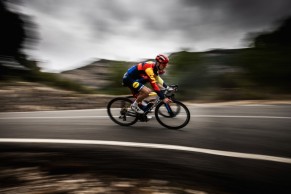
Trek ends its Émonda model and unifies aerodynamics and lightness in the new Madone Gen 8
The new Trek Madone Gen 8 is officially presented, the machine in which the Wisconsin brand decisively opts for a single versatile competition model, merging the Émonda line that identified its climbing bikes with the Madone model, the name that has identified its competition models for over two decades, in reference to the Col de la Madone, near Nice, where Lance Armstrong conducted his tests. This is the chosen name for this new bike.
New carbon for greater lightness
Obviously, when creating this new Trek Madone Gen 8, the goal was not easy as the brand set a condition for its engineers that it had to be as light as the Émonda and improve the aerodynamics of the previous Madone. These premises have required intense development work and the creation of new aerodynamic solutions to improve the numbers with less material to define the bike's profiles.

RECOMENDADO
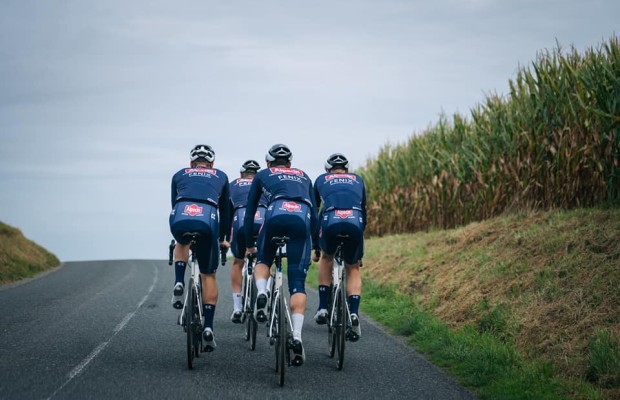
The cyclist's patience: how long, gentle training sessions build your best season

Tips for cycling in the rain

25 cycling gifts ideas to get it right

When do helmets have to be changed? Do they have an expiration date?

Some reasons to stay away from the road in winter
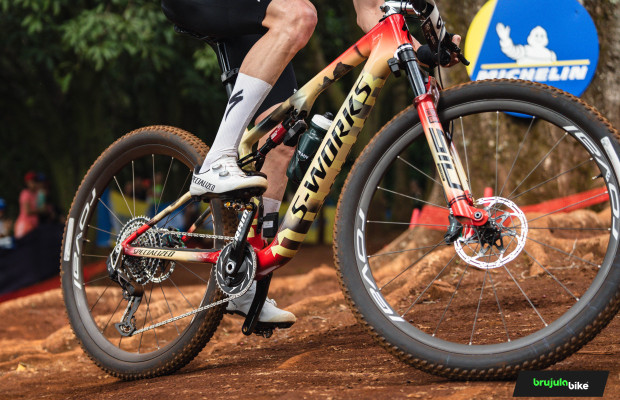
S-Works: what does it really mean and where does Specialized's most exclusive label come from?
Not everything was so bleak for the engineers as, to assist them in their task, they were able to use a new series of carbon fiber under the name OCLV 900, 20% stronger than the previous OCLV 800+, allowing less material to be used to meet the stiffness requirements. These figures had to, at the very least, match those of the Émonda. The result is a frame 320 g lighter than the previous Madone, and practically identical in weight to the Émonda.
However, it is in aerodynamics where we find the true innovations of this bike, as it was not easy to improve on the numbers of the Madone 7 with much less material to shape the bike. This work, as usual, has involved long hours and days of simulations in CFD software and wind tunnel tests to validate the results.

With the new frame, we can also see some novelties such as the incorporation of a UDH derailleur hanger, undoubtedly something to be appreciated in the standardization of this component.
Innovating in aerodynamics
Until the previous Madone, Trek had been relying on the KVF truncated profile tubes, which were based on something as simple as cutting the tail of a standard NACA profile so that the behavior of the airflow remains similar to if the profile were complete. This solution has been working for over a decade, but to comply with the previous UCI standard regarding aerodynamic profiles, it had to maintain a 3:1 ratio between width and depth, meaning that as the width of the tubes increased to improve aerodynamics, the length also had to increase.
With the current standards, it is no longer necessary to adhere to those proportions in the tubes, but the bike must fit into patterns that set the limits of the different sections, fully described in the UCI regulations. Trek has addressed this new freedom by adding to its simulation tools the ability to adjust the profiles in width and length at will, without having to adhere to the standards set by NACA.

With this freedom, they have designed profiles that vary even within the same tube, as airflow behaves differently at the base of the diagonal tube than in the vicinity of the head tube, for example. These profiles tend to be more square, which also has a benefit in meeting stiffness requirements.
A new aerodynamics that this Trek Madone Gen 8 introduces under the name Full System Foil, maintaining one of the hallmarks of the previous Madone, the IsoFlow design in the seat tube, which divides it leaving a gap through which air flows to achieve better interaction with the cyclist's legs. This design also replaces the previous IsoSpeed in absorption tasks, and in this Trek Madone Gen 8, it improves the flexion capacity of the previous IsoFlow by 80%, making this new machine 24% more absorbent than the Émonda.

But the new aerodynamic features of this Trek Madone Gen 8 do not end there. The entire block formed by the front wheel exit edge, the diagonal tube, the two bottle cages, the seat tube, and the rear wheel leading edge are conceived as a single aerodynamic profile with maximum continuity so that the airflow interacts with them as if they were a solid structure.
The main problem in achieving this was the water bottles, as engineers have known for a long time that cylindrical shapes are very inefficient in terms of aerodynamics. Trek has designed new aero bottles that meet all the conditions set by the team, with both bottles being identical and the bottle cages being compatible with standard bottles.

The new RSL bottles provide a gain of 3.7 W in the Madone, improvements that, while compatible with standard bottle cages, can also be leveraged to a lesser extent on other bikes. The final element of the Full System Foil is the integrated handlebar, which, like that of the previous Madone, has a 3-centimeter flare between the grip in the area of the levers and the lower part, and has been worked on to adapt the shaping with the same philosophy used in the rest of the bike's tubes.
6 different bikes
It is not new among manufacturers to create different sizes with specific layups for each as a way to achieve identical behavior for all of them. In the new Trek Madone Gen 8, the Waterloo brand has gone much further, as the shapes of the tubes and their aerodynamic profiles are also specific for each of the 6 available sizes, meaning that, in reality, there are 6 different bikes that share the main design lines.

By the way, Trek has taken the opportunity to modify the sizing of this bike from 8 to 6 available sizes since, according to data collected by their biomechanical positioning system, they are able to meet the needs of the vast majority of cyclists with 6 sizes, avoiding overlaps between them. Additionally, the nomenclature of the sizes has also changed, abandoning the traditional system of road bikes and moving to a more intuitive XS, SM, MD, ML, LG, and XL that cover the same range as the previous sizes and maintain a cyclist's positioning similar to their current H1.5 geometry.
For all budgets
As in previous Trek Madone models, in addition to the SLR builds with the top-of-the-line OCLV 900 frame, there will be an SL level made with OCLV 500 carbon. Obviously, this results in a slightly heavier and more absorbent frame, although the molds are identical, so the SL has the same aerodynamic qualities as its bigger sister.
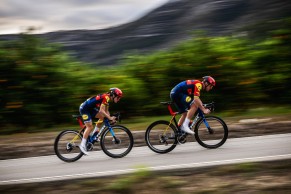
There will also be some differences in the builds, for example, a two-piece handlebar-stem set, although also aerodynamically designed. The SL models will not include the aerodynamic bottles and bottle cages as standard. On the other hand, the SL frame will be compatible with mechanical drivetrains unlike the top-of-the-line model. The last difference is that the Project One customization program will only be available for their SLR models.
Trek Madone Gen 8: Models and prices
Madone SLR 9 AXS

- Price: €13,999 (€16,399 Project One Interstellar)
- Weight: 7 kg
- Frame: 900 Series OCLV Carbon
- Groupset: SRAM Red AXS, 48/35 power meter cranks, 10-33 cassette
- Wheels: Bontrager Aeoulus RSL 51
- Tires: Pirelli P-Zero Race 700x28c
- Seatpost: Madone Aero Carbon
- Saddle: Bontrager Aeolus RSL
- Handlebar: Trek Aero RSL
Madone SLR 9

- Price: €13,499
- Weight: 7.05 kg
- Frame: 900 Series OCLV Carbon
- Groupset: Shimano Dura-Ace Di2, 52/36 cranks, 11-30 cassette
- Wheels: Bontrager Aeoulus RSL 51
- Tires: Pirelli P-Zero Race 700x28c
- Seatpost: Madone Aero Carbon
- Saddle: Bontrager Aeolus RSL
- Handlebar: Trek Aero RSL
Madone SLR 7 AXS
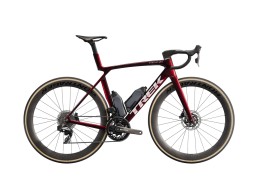
- Price: €9,499
- Weight: N/A
- Frame: 900 Series OCLV Carbon
- Groupset: SRAM Force AXS, 48/35 power meter cranks, 10-33 cassette
- Wheels: Bontrager Aeoulus Pro 51
- Tires: Pirelli P-Zero Race 700x28c
- Seatpost: Madone Aero Carbon
- Saddle: Bontrager Aeolus Pro
- Handlebar: Trek Aero RSL
Madone SLR 7
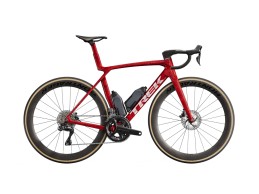
- Price: €8,999
- Weight: 8.50 kg
- Frame: 900 Series OCLV Carbon
- Groupset: Shimano Ultegra Di2, 52/36 cranks, 11-30 cassette
- Wheels: Bontrager Aeoulus Pro 51
- Tires: Pirelli P-Zero Race 700x28c
- Seatpost: Madone Aero Carbon
- Saddle: Bontrager Aeolus Pro
- Handlebar: Trek Aero RSL
Madone SL 7
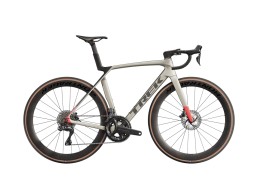
- Price: 6,499 €
- Weight: 7.98 kg
- Frame: 500 Series OCLV Carbon
- Groupset: Shimano Ultegra Di2, cranks 50/34, casette 11-34
- Wheels: Bontrager Aeoulus Pro 51
- Tires: Bontrager R3 Hard-Case Lite 700x28c
- Seatpost: Madone Aero Carbon
- Saddle: Bontrager Aeolus P2 Elite
- Handlebar: Bontrager RSL Aero
- Stem: Trek RCS Pro
Madone SL 6 AXS
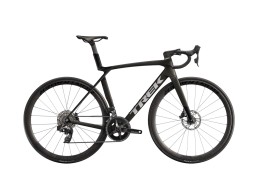
- Price: 5,499 €
- Weight: 8.90 kg
- Frame: 500 Series OCLV Carbon
- Groupset: SRAM Rival AXS, cranks with power meter 48/35, casette 10-36
- Wheels: Bontrager Aeoulus Elite 35
- Tires: Bontrager R3 Hard-Case Lite 700x28c
- Seatpost: Madone Aero Carbon
- Saddle: Bontrager Aeolus Comp
- Handlebar: Bontrager Comp
- Stem: Trek RCS Pro
Madone SL 6
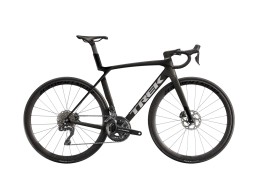
- Price: 4,999 €
- Weight: 8.70 kg
- Frame: 500 Series OCLV Carbon
- Groupset: Shimano 105 Di2, cranks 50/34, casette 11-34
- Wheels: Bontrager Aeoulus Elite 35
- Tires: Bontrager R3 Hard-Case Lite 700x28c
- Seatpost: Madone Aero Carbon
- Saddle: Bontrager Aeolus Comp
- Handlebar: Bontrager Comp
- Stem: Trek RCS Pro
Madone SL 5
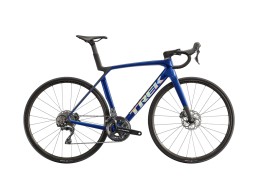
- Price: 3,499 €
- Weight: 9 kg
- Frame: 500 Series OCLV Carbon
- Groupset: Shimano 105, cranks 50/34, casette 11-34
- Wheels: Bontrager Paradigm SL
- Tires: Bontrager R1 Hard-Case Lite 700x28c
- Seatpost: Madone Aero Carbon
- Saddle: Bontrager Aeolus Comp
- Handlebar: Bontrager Comp
- Stem: Trek RCS Pro
Frame Kit Madone SLR Disc
- Price: 4,999 €
- Weight: 796 g (frame), 350 g (fork)
- Material: 800 Series OCLV Carbon
Frame Kit Madone SL Disc
- Price: 2,999 €
- Weight: N/D
- Material: 500 Series OCLV Carbon